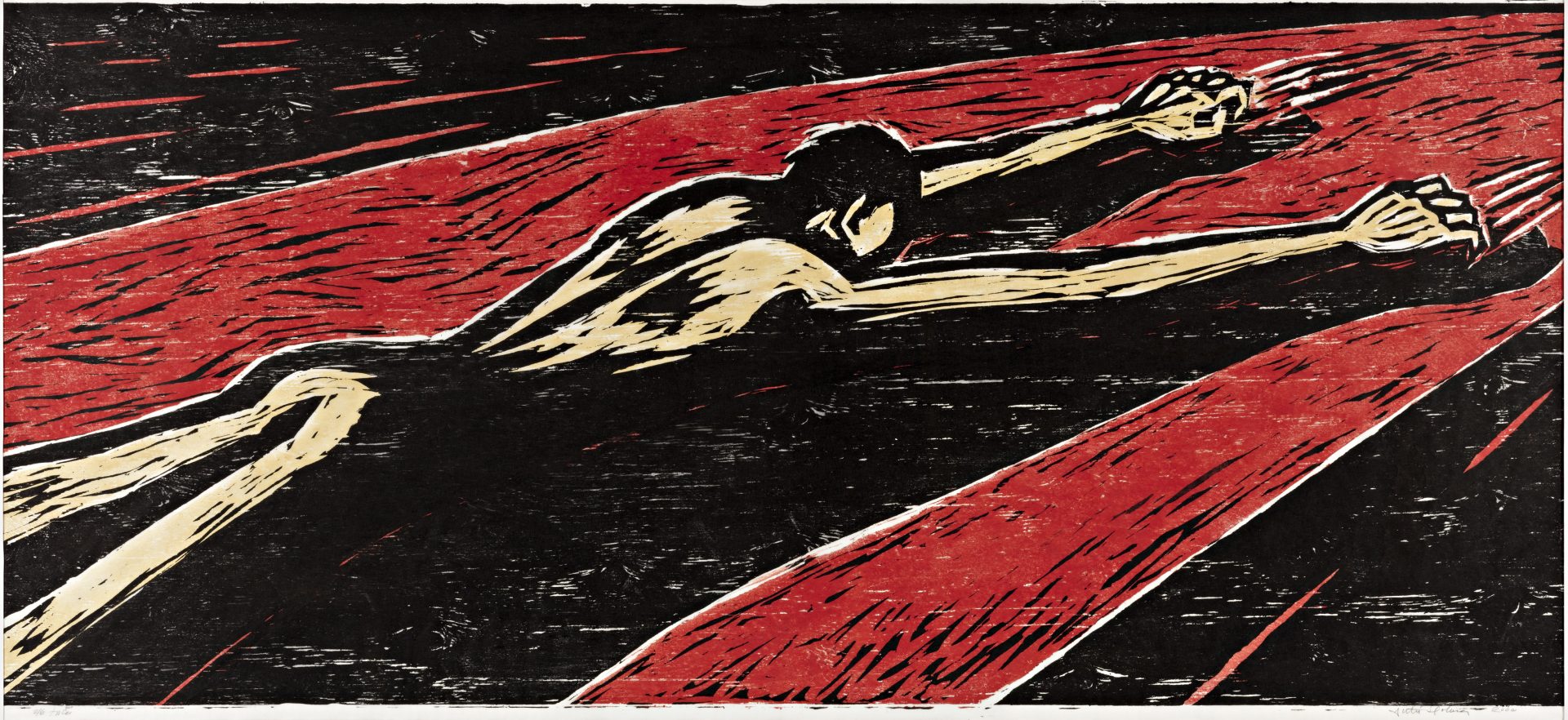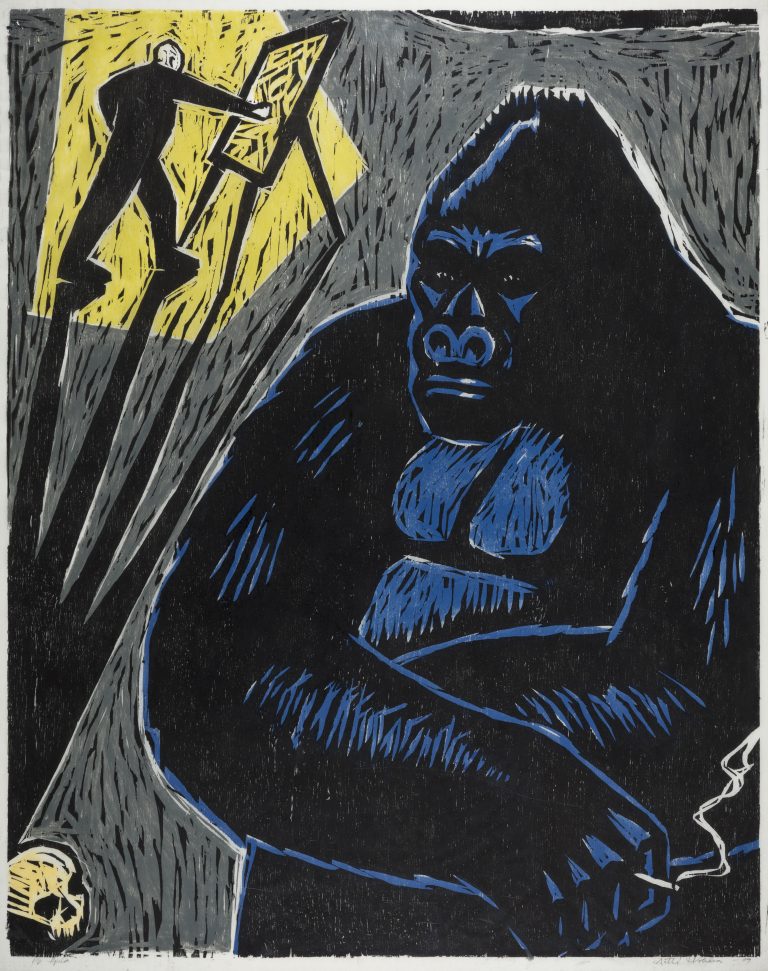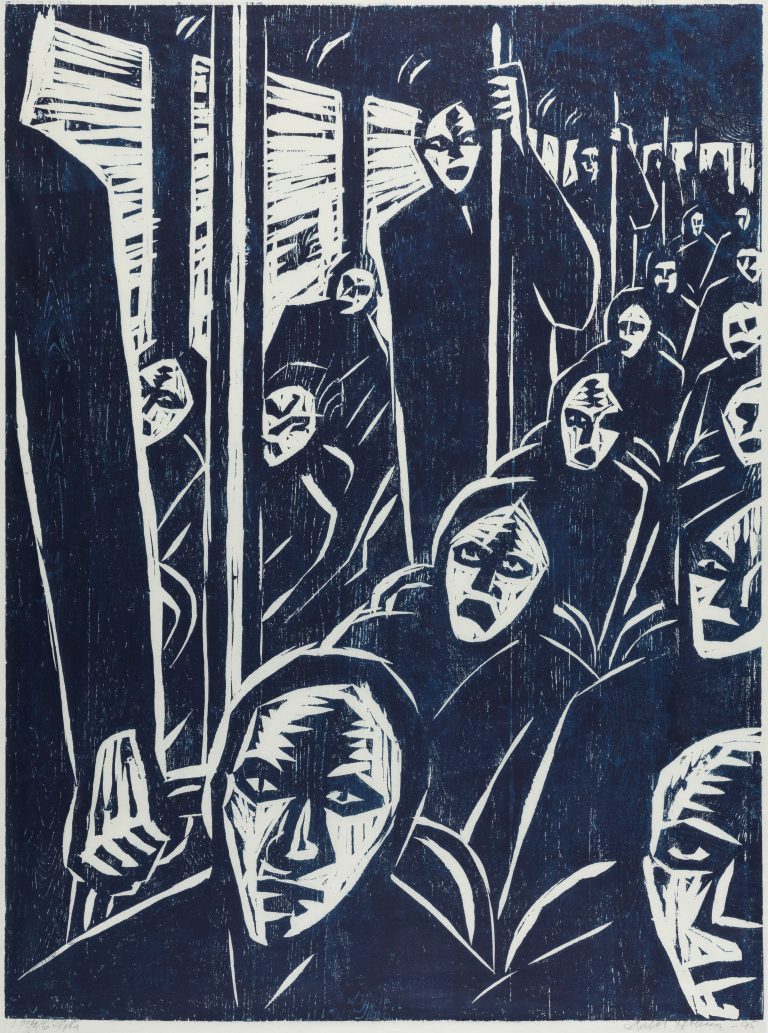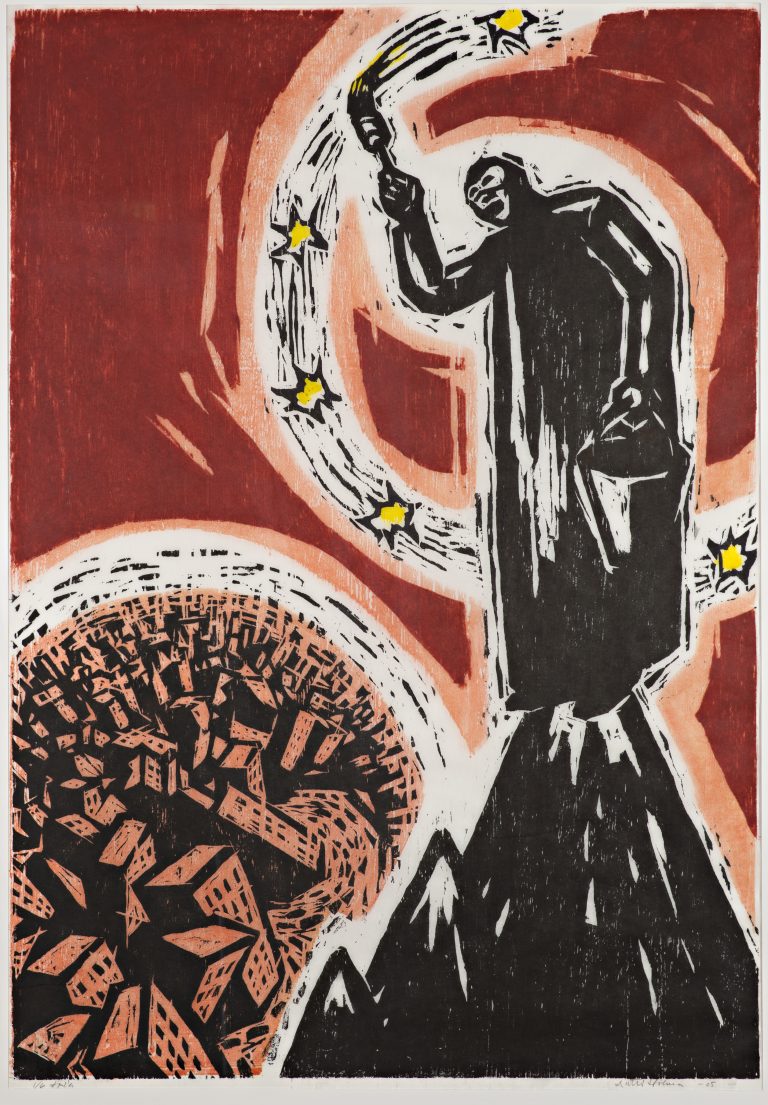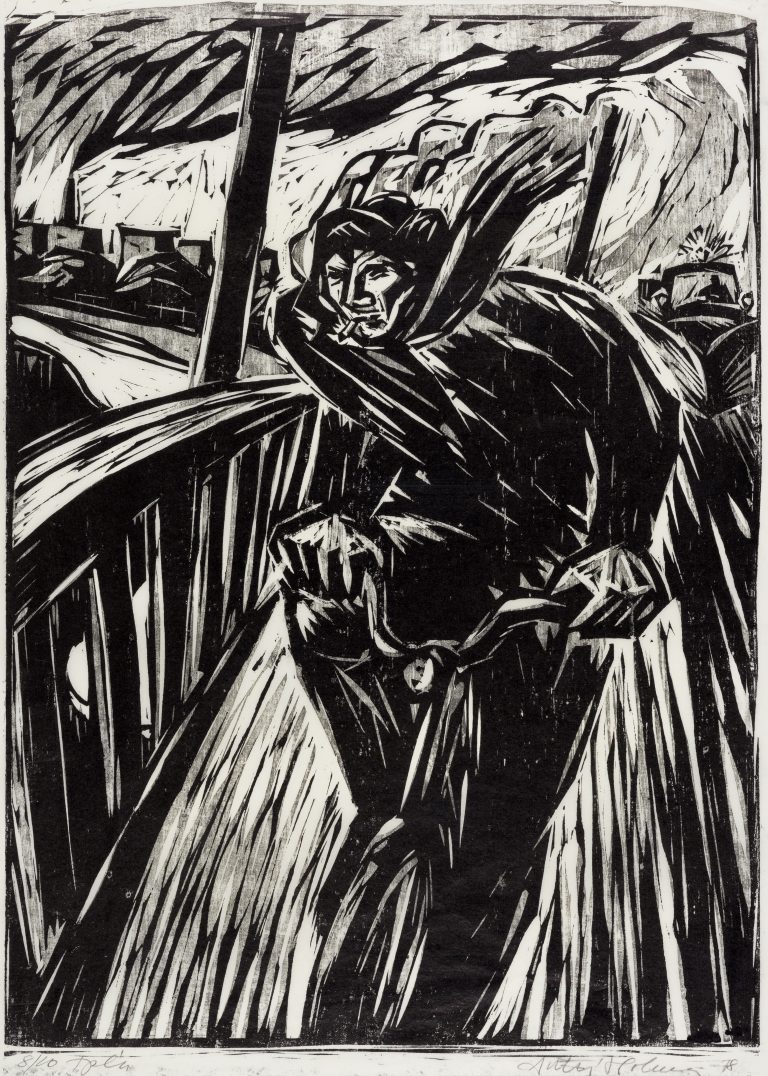With works from the late 1970s to the present day, this cross-section of the artist’s work focuses on works from the 2000s. Antti Holma (b. 1942) has made the incomprehensibility of existence the central theme of his art. Although the subject matter is weighty, making art is meaningful in itself. Honesty about oneself and the state of the world is an important starting point for the work.
Antti Holma, now on a state artist’s pension, still works actively in his small workshop in the courtyard of an old wool factory in Pikisaari. He is a veteran of the island’s artistic community, with more than 50 years of experience of working in different spaces on the island.
The road to becoming an artist began with studies in Helsinki, first at the Free Art School for a couple of years, then at the Institute of Art and Design, from which Holma graduated in 1969. For the next few years he worked as an art teacher and later as a carpenter for financial reasons, before becoming an independent artist in 1980. Holma had his first solo exhibition in Oulu the following year and in Helsinki in 1984.
Holma originally wanted to be a painter, but with the help of the printmaker Pentti Kaskipuro, he became interested in printmaking, especially woodcut printmaking, during his studies. Woodcut printmaking is a relief printing technique in which the surface of a block of wood is carved at different levels using chisels and other tools. The uncarved areas are painted with a roller in the desired colour. Finally, the image on the block is transferred to the printing paper using various techniques; the colours that need to be lighter are rubbed onto the paper with a spoon and the darker areas are printed with a hand press.
Holma’s electrifying and physical style of engraving is easily recognisable. Emotions and stories are told through a language of gesture, expression and posture. The figurative works continue the tradition of Expressionist art, while the influence of 60s Pop Art is also evident. His early woodcuts from the 1970s and 1980s are mainly in black and white and of moderate size. The themes of manual labour and the local milieu were particularly prominent. In the mid-1980s, heavier emotional states entered the picture. Around the same time, Holma introduced red, brown, yellow and sometimes blue to accompany the black ink. At the same time, the size of the work increased and has remained remarkably large to this day.
At first, the woodblock prints showed men, gangs and the power of the masses. A humanoid gorilla figure came from the childhood film King Kong (1933). Since then, the tension between the binary genders, instincts and sexuality has become another key theme. The malfunctioning of the welfare state and global injustices such as racism and wars have also played their part. Holma has done little to soften the edges over the decades – that much has become clear. It is therefore a pleasure to find works in which the eternal struggle is countered by a more relaxed pace, even dance. A similar sense of seizing the moment can be found in Juice Leskinen’s familiar lyrics: “There is no sense giving up to jive / you never get from this life alive”.
The exhibition has been supported by a state grant from the Finnish Heritage Agency.
